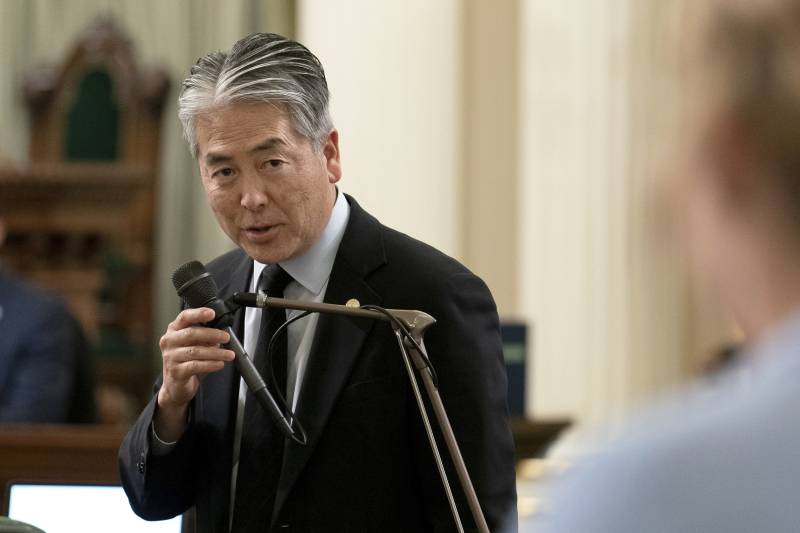Money from the bonds would backfill some of those cuts, plus pay for a slew of priority projects up and down the state for years to come.
But the money isn’t free. The climate bond alone will cost taxpayers more than $19 billion to pay off, with annual payments of $650 million per year, putting more pressure on the state’s finances.
With Gov. Gavin Newsom meeting with President Joe Biden and fellow Democratic governors in Washington, Senate President Pro Tempore Mike McGuire signed the bills into law as acting governor, capping a raucous evening session of the Legislature that was disrupted multiple times by Israel-Hamas war protesters.
Asking voters for permission to borrow large sums of money is always risky, particularly when doing it multiple times in the same election.
In addition to the two statewide ballots, voters will likely be asked to approve hundreds of local borrowing proposals — including a massive $20 billion housing bond for the nine counties that surround the San Francisco Bay.
Recent history suggests voters are tiring of these bonds.
In 2020, despite a history of approving statewide school bonds, voters rejected a $15 billion education borrowing proposal — what would have been the largest in state history. And earlier this year, voters only narrowly approved Proposition 1 authorizing the state to borrow more than $6 billion to help house the homeless — a result widely seen as a warning for lawmakers who were considering taking on more debt.
“I would have thought that the razor-thin margin on Proposition 1 would be a wake-up call on these ill-defined bonds,” said Jon Coupal, president of the Howard Jarvis Taxpayers Association. “Whether it comes to education homelessness or climate, California citizens perceive that they are not getting value for their dollar.”
Supporters say voters are savvy enough to recognize the great need that will be filled — most school facilities are built with a combination of state and local money. But demand for state dollars is so great that there’s a waiting list of projects worth more than $3 billion, according to Democratic Assemblymember Al Muratsuchi, who sits on the committee that approves the funding.
“Why do you go to the voter? You go to the voters to do investments that move us ahead that single allocations from the budget can’t afford,” Democratic state Sen. John Laird said.
Much of the climate bond would go to improve water supply and help prepare for wildfires. Statewide, nearly 400 water systems don’t meet state safety standards. Meanwhile, 15 of the 20 most destructive wildfires in state history have occurred in the past decade. Heat waves are getting longer and more severe, placing public safety at risk, and intense winter storms have caused damaging floods in recent years.
“It’s something that’s more tangible for people here and more real because they’ve seen it so much,” said Melissa Romero, deputy legislative director for California Environmental Voters, an advocacy group that supports the bond.
